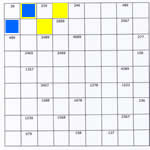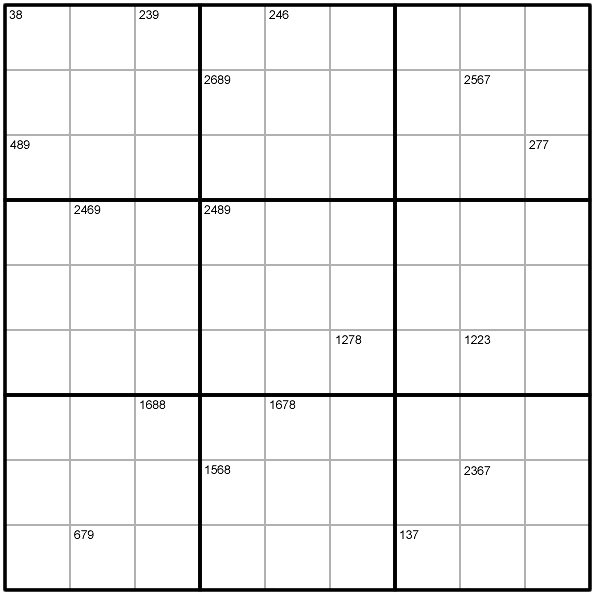Or search by topic
Number and algebra
Geometry and measure
Probability and statistics
Working mathematically
Advanced mathematics
For younger learners
Intersection Sudoku 1



Produced by Henry Kwok
The Basic Rules of "Intersection Sudoku"
- Each column, each row, and each box (3x3 subgrid) must have the numbers 1 to 9.
- No column, row or box can have two squares with the same number.
A Short Demonstration
The first square in the top left corner of this sample (1,1) contains a set of two small digits {3 and 8} and the square (1,3) contains a set of three small digits {2, 3 and 9}.

If we colour the squares adjacent to (1,1) with blue, and the squares adjacent to (1,3) with yellow, we find that the square (1,2) is coloured both with blue and yellow. It is the intersection of two sets of coloured squares, hence the name "Intersection Sudoku".
As both squares (1,1) and (1,3) contain the small digit 3 , the number in square (1,2) must be 3. This leaves the square (2,1) with the number 8.
You may also like
Consecutive Numbers
An investigation involving adding and subtracting sets of consecutive numbers. Lots to find out, lots to explore.
Tea Cups
Place the 16 different combinations of cup/saucer in this 4 by 4 arrangement so that no row or column contains more than one cup or saucer of the same colour.
Counting on Letters
The letters of the word ABACUS have been arranged in the shape of a triangle. How many different ways can you find to read the word ABACUS from this triangular pattern?


